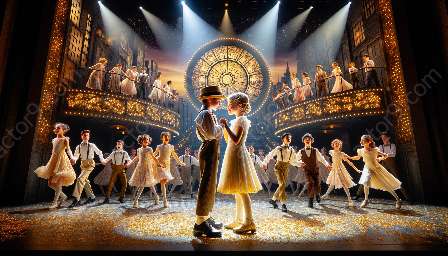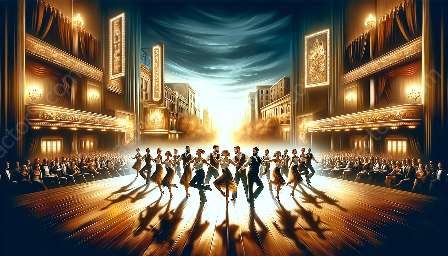Wardrobe changes are an integral part of the seamless and dazzling performance in Broadway & Musical Theater. The topic of handling wardrobe changes dovetails with the roles and responsibilities of Broadway backup dancers. In this article, we'll explore the art and practicalities of managing wardrobe changes in the high-energy world of Broadway. Let's delve into the strategies, challenges, and importance of wardrobe changes in the context of Broadway & Musical Theater.
Broadway Backup Dancers: Roles and Responsibilities
Before delving into the specifics of handling wardrobe changes, it's crucial to understand the roles and responsibilities of Broadway backup dancers. They play a vital role in enhancing the visual appeal of Broadway productions through their synchronized movements, precise execution of choreography, and stage presence. Backup dancers often undergo rigorous training to ensure that they seamlessly complement the lead performers while adding depth and dimension to the overall performance. Their commitment and professionalism contribute significantly to the success of Broadway productions.
Backup dancers are relied upon to execute complex choreography with precision, and their ability to adapt to different styles of dance is essential. They must also maintain consistency in their performance throughout the duration of the production. Additionally, backup dancers are expected to embody the characters they are playing, and their expressions and movements help convey the narrative of the production.
The Art of Wardrobe Changes
Wardrobe changes in Broadway and musical theater productions are a ballet of their own. Behind the glitz and glamour of the performances, there is a dedicated team working tirelessly to ensure that the costume changes happen seamlessly and flawlessly.
For backup dancers, wardrobe changes are not only about swapping costumes; they are an essential part of their performance. A costume change should be executed with precision and finesse, in sync with the rhythm of the production. The ability to change costumes swiftly and seamlessly is an art mastered by backup dancers, enhancing the visual and storytelling aspects of the production.
Challenges in Wardrobe Changes
Despite the meticulous planning and rehearsal, wardrobe changes come with their own set of challenges. Time constraints, intricate costume designs, multiple layers of clothing, and quick changes in-between scenes all add to the complexity of managing wardrobe changes. Backup dancers need to navigate these challenges with grace and composure, ensuring that the pace and rhythm of the production are maintained.
Strategies for Successful Wardrobe Changes
With careful planning and coordination, wardrobe changes can be managed effectively. Rehearsing the costume changes alongside the choreography allows the dancers to familiarize themselves with the process and timings, ensuring that they seamlessly integrate costume changes into their performance. Additionally, having dedicated dressers and costume assistants backstage can streamline the process, enabling quick changes without disrupting the flow of the production.
Backup dancers often develop their own techniques for efficient wardrobe changes, such as using quick-release fastenings, strategic layering of costumes, and practicing swift movements to minimize transition times. These strategies, combined with teamwork and clear communication, contribute to the seamless execution of wardrobe changes.
Importance of Wardrobe Changes
Wardrobe changes are not merely logistical challenges; they are an integral part of the storytelling and visual spectacle of Broadway productions. Costume changes can signify character transformation, mark the passage of time, or add dramatic flair to a scene. The seamless execution of wardrobe changes enhances the overall production values and elevates the audience's experience.
Conclusion
The world of Broadway & Musical Theater is a captivating fusion of artistry, precision, and creativity. As we explored the intricacies of handling wardrobe changes in this dynamic environment, we gained insights into the vital role of backup dancers, the art of wardrobe changes, and the strategies for seamless execution. The dedication, skill, and coordination involved in managing wardrobe changes contribute significantly to the immersive experience of Broadway & Musical Theater productions. From the elaborate costume designs to the swift and elegant transitions, wardrobe changes are an essential element that adds depth and spectacle to the magical world of Broadway.



































